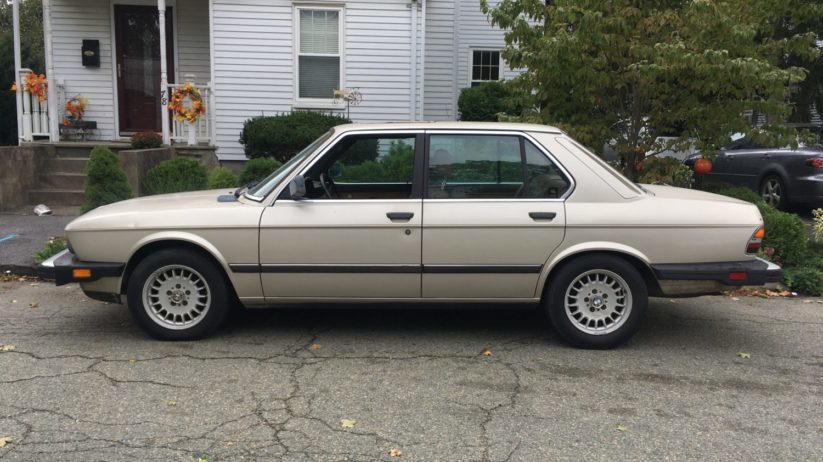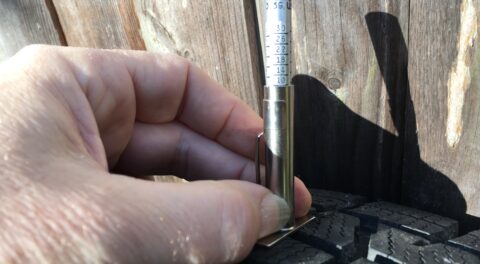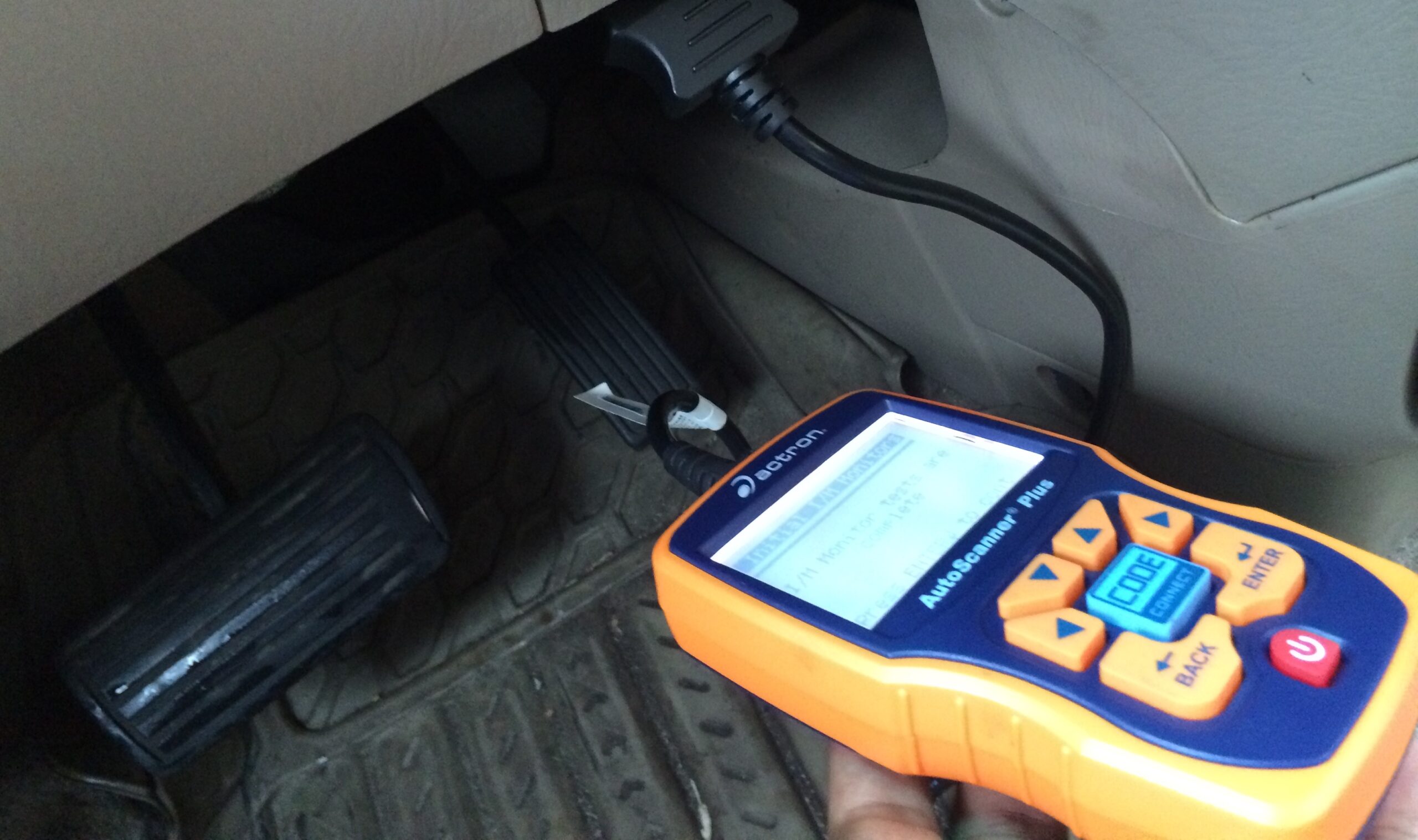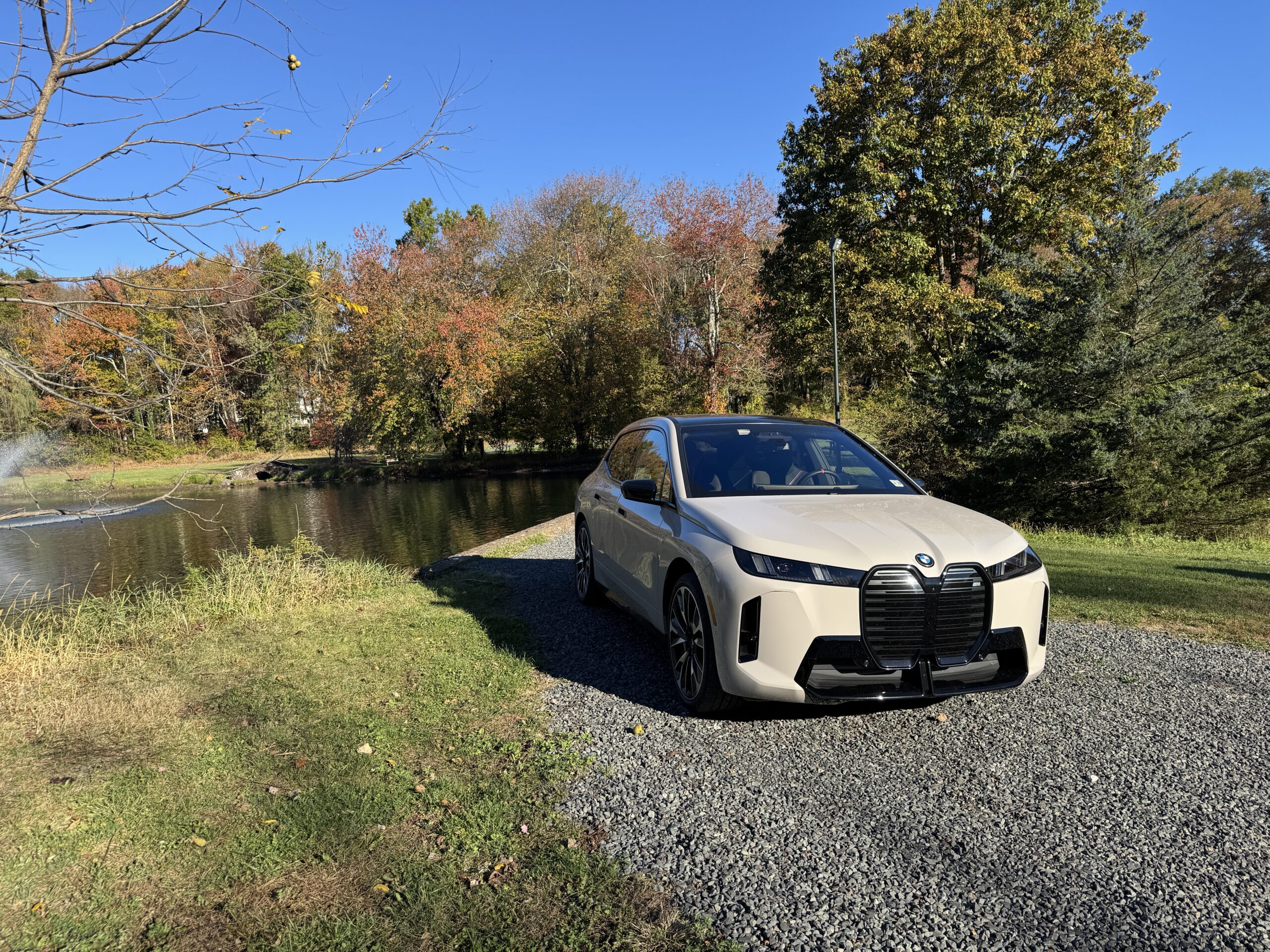Two weeks ago, I wrote about my sight-unseen purchase of the Lama, a 1987 E28 535i that had appeared on Craigslist in Tampa. It had 135,000 miles on it, and a Lama-colored interior; it had been sitting for five years, but reportedly started, ran, drove, and stopped, although it idled rough and had a brake pedal that sank to the floor.
The seller and I agreed on $1,400, which seemed to me enough to cover the risk of not really knowing what it was I was buying.
My good friend Al lives in Tampa, so as part of the purchase, I had the seller arrange to have the car towed to Al’s house. When it arrived there, Al verified the basic condition of the car for me by starting it and driving it around the block. The brake pedal, he said, did initially go to the floor, but once pumped up, it appeared to stop the car reliably.
I was thrilled when I saw that Spirit Air had $110 round-trip non-stop flights from Boston to Tampa. I thought that the Lama was a candidate for a mini-Ran-When-Parked saga: I planned to buy a round-trip ticket with, say, a two-day stay, fly down there with a brake master cylinder and a few other parts, go out to dinner with Al, sleep on his sofa, work on the Lama in his driveway, and try to give it what it needed. If I was successful, I could drive it home. If not, I’d simply use the other leg of the ticket, fly home, and have the car shipped. There seemed to be very little downside. I’d only be putting one cheap airline ticket at risk.
Part of what made the whole Ran When Parked adventure with Louie the ’72 2002tii work was that my friend Jake Metz knows 2002s. Jake looked at Louie for me before I bought it, and again after I had it towed to his pole barn. He noted that Louie’s tire sidewalls were badly cracked, that the giubo was in pieces, that the center support bearing was detached, and that the brakes were seized; this was invaluable information that helped me go down there with the right parts to resurrect the car. Of course, since Louie hadn’t been started or moved in a decade and hadn’t really been on the road since the Carter administration, I knew that it needed, well, everything, so in addition to what Jake reported, I took a myriad of fuel and ignition parts that any long-dead tii was likely to need.
In contrast, my friend Al, although he’d certainly do anything I asked, is not a car guy, much less an E28 guy.
Al and I had a Facetime session where he showed me that the car’s TRX tires were obviously dry-rotted and cracked—possibly even slashed by an apex predator—and certainly not safe to drive 1,500 miles on. We stayed on Facetime while Al drove the car around the block. He noted that there was a chainsaw-like rattle coming from the back of the car; I could hear it over the phone.
These certainly were valuable observations, but they fell considerably short of the kind of feedback a fellow car person can give you. If you have a buddy who knows E28s, he or she might be able to drive it for you and say, “Yeah, it revs, but it sounds like it’s missing; if it sat for five years, I bet it needs injectors. And it feels like the brake bomb is going.” Al couldn’t give me that kind of read.
Plus, the Lama, as a newer running, driving car (unlike Louie), fell into a gray area: The optimist thinks, “Well, it’s running; how bad could it be? Head for the Interstate, keep driving, stop when you have to.” Put a different way, how many parts do you buy and ship down for a car that’s already running and driving? I ordered the brake master cylinder, and added a set of plugs, belts, and a water pump. That seemed reasonable.
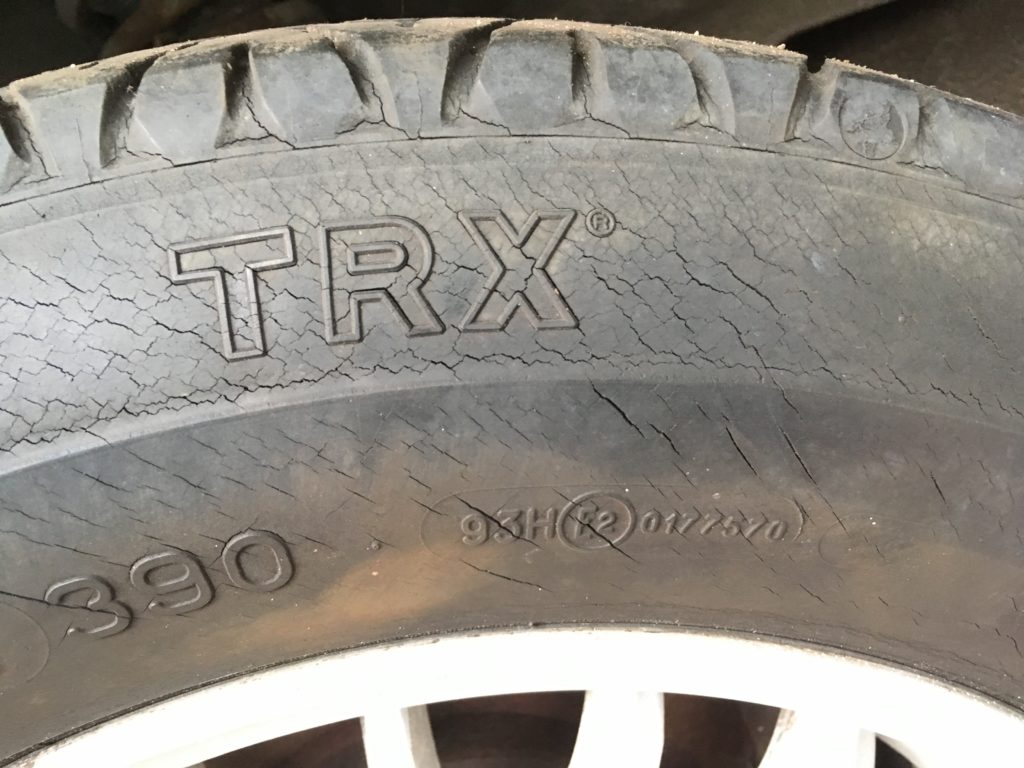
No, I wasn’t going to drive 1,500 miles on these.
But clearly the tires were the first hurdle. The seller had warned me about the old TRX tires on the car, and offered that he had a set of wheels and tires that he’d bought for the car which he would sell me for $400. Whether or not that’s a good price depends, obviously, on what the tires and wheels are, and what shape they’re in. He sent me one blurry cell-phone image of what appeared to be 16″ E38 basketweaves. I requested photos of the numbers in the bolt circle, the tire size, brand, date code, and sidewalls; after all, I’d be staking my trip on the assumption that they’d fit and were drivable and safe. After several requests, I received one picture of one sidewall. It was better than the TRXs, but it, too, was clearly dry-rotted.
Damn.
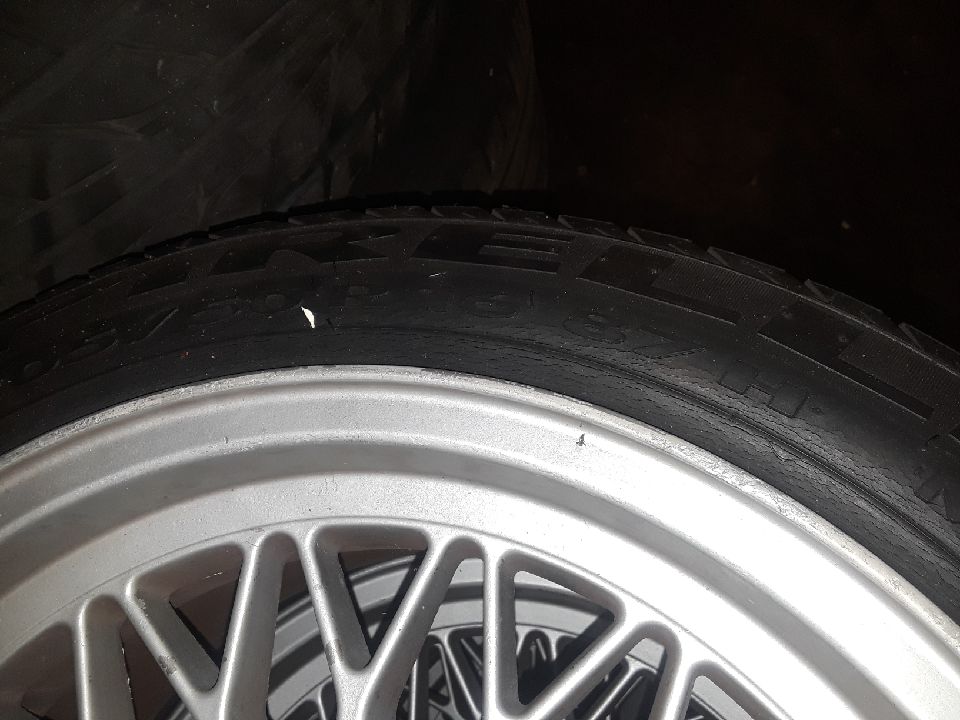
The dry-rot in the tires the seller offered me was plainly visible in the cell-phone picture.
Suddenly the whole trip seemed to pivot on the ability to remotely procure a set of wheels and tires. TRXs, if you don’t know, are a metric-size tire produced by Michelin in the 1980s and used by numerous European car manufacturers; BMW used them on the 5, 6, and 7 Series cars.
They require a set of matching metric-size TRX wheels.
Reproduction TRX tires are available from Coker Tire, but they’re expensive. Nearly everyone with a BMW that originally had TRXs has long since dumped them in favor of wheels from an E34, E38, or E39, with appropriately-sized tires mounted on them. For example, 16″ E38 basketweaves fit an E28 nicely, but their stock 235/60-16 tires are too tall; the correct size for an E28 is 205/55-16. 15″ E34 ‘weaves and their stock 225/60-15s fit, although they also have too big a diameter.
I looked on Craigslist in Tampa and didn’t find anything. Thinking that I could drive a bit on the TRXs, I searched northward to Ocala and Jacksonville, but came up empty. I put out the call on Facebook and received some helpful responses, but never unearthed a sure thing.
It was starting to feel like I was trying to draw an inside straight on a tight time frame. If I instead shipped the car and had it at my house, I could drive it around on the TRXs, at least for a while, and buy wheels and tires as good deals presented themselves.
I then took a hard look at the projected expenses for driving the Lama back. I figured, at a bare minimum, $110 for the airfare, $35 for baggage (Spirit upcharges you for everything), $200 for gas, $60 to ship my tools and brake bleeder, $150 for two nights in a cheap motel, and $100 for food: $650, excluding the cost of wheels and tires—if nothing went wrong on the 1,500-mile drive.
I am, above most things, a practical person. I wanted to get down to Tampa and see my friend Al and drive the Lama back and have another adventure to write about, but only if it made sense. I’d already done the gonzo road trip with Louie and written Ran When Parked; how many things would need to go wrong on the trip for me to get another book out of the same subject? The car would need to catch fire, be carried off by a tornado, and then get swallowed by a sinkhole, and I would need to fight off one of those giant Florida Everglade pythons. That would be book-worthy.
So I began looking at shipping. There’s a detailed chapter on this topic in Ran When Parked. Basically, unless you’re paying money for expensive, enclosed point-to-point shipping, where the driver works directly for the shipper, you’re not hiring a shipper, you’re hiring a broker who hires a shipper, possibly several. Brokers list the shipment on a website called Central Dispatch, a shipper takes the job, and the broker adds on his or her fee. Folks like me don’t have an account on Central Dispatch, so in order to get some idea of cost, I went to UShip, which is more expensive because they add in their own fee.
The initial UShip price estimation based on comparable shipments to nearby zip codes was nearly a thousand bucks, so I created a real UShip listing with the exact addresses in it. The first bids were high, but then they began to come down, and seemed to stabilize at around $750, except for one outlier at $638. Of course, when I looked at reviews of that broker, I saw horror stories from people whose cars weren’t released until they paid him more money.
Around this time, my FB friend Layne Wylie said that he’d had good luck with a broker in Texas named Garry Thomas and his company, Gartho Logistics. I looked at their website, and found Garry’s blog where he described being a trucker for his entire professional life, how he got into shipping after an injury forced him to give up driving, how he’d only ever met a few honest brokers, and how he was looking to change that.
This connected with me at the car-guy-to-car-guy level.
I called Garry, and we had a great chat. I said that if he could get close to my projected $650 driving expenses, I’d do it, and that my only requirement was that my friend Al couldn’t be jerked around—that is, he’d need to leave work to meet the truck, so if a shipper said he’d be there at 10:00 a.m. they HAD to be there at 10:00 a.m. Garry sharpened his pencil, gave me a $700 quote, and I committed.
I posted my decision to ship the car on Facebook. Some of the responses were supportive and complimented me on my graying rationality, but others were merciless. “Worst. Book. Ever,” said Brad day. Clay Weiland chimed in, “I Drive An E28 Now: A Pamphlet, available now on Amazon.”
Tough crowd.
Last Tuesday, Al sent me some photos of the Lama being loaded onto the transport. One of the photos alarmed me: In it, the car was engulfed in a cloud of blue smoke. It made me realize that I might not have asked either the seller or Al whether the engine smoked! I prayed that in the photo, the oily-looking smoke was somehow being blown back from the transport and not coming from the Lama. Denial, as they say, ain’t just a river in Egypt.
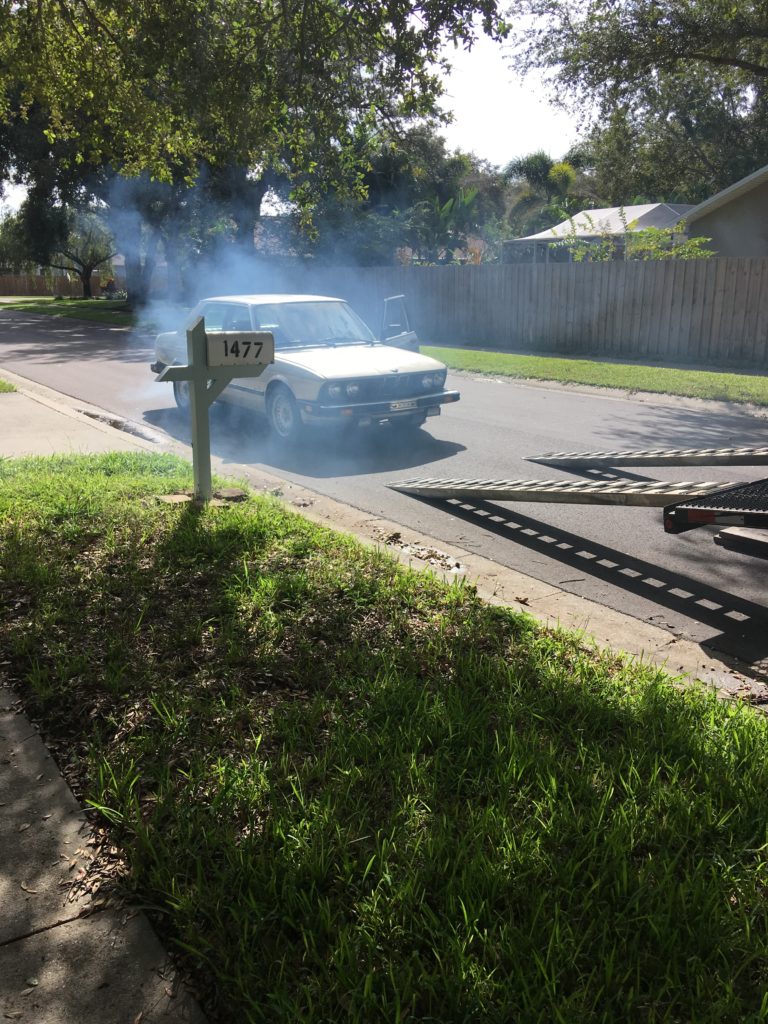
This didn’t look good.
On Thursday, the shipper called me, saying he’d be in Newton in a few hours. I live on a narrow street with low trees and power lines; transporters can’t get down it, so when I ship something, I have the transporter load or unload at a location two left turns around the corner from me, maybe 100 yards away. A few hours later, the shipper called saying that he was at that location, and that the car had already been unloaded. I walked around the corner and came face to face with the Lama.
It was engulfed in a cloud of blue smoke. Then it died.
The shipper said he’d had no problems starting the car, but I cranked and cranked it and got nothing. Finally the car kicked over, but it barely ran. Clouds of oil smoke belched out the tailpipe. I had to keep my foot in it to prevent it from stalling.
The rough running was accompanied by the chainsaw-like rattle my friend Al had described. It was a bit of a spectacle; although I was only a hundred yards and two right turns from my driveway, the car, unfortunately, was facing the wrong way on a busy street.
The transporter was parked on one side. About 5o feet away, on the other side of the street, was an electrical utility vehicle with traffic cones around a light pole on which work was being performed. Traffic was beginning to back up around this S-shaped obstruction while I waited in the smoking, sputtering, chainsaw-sounding car.
When I had a clear moment, I did an ugly three-point-turn in the middle of the street, trying to keep my right foot on the gas while also pumping the brakes to keep the pedal from sinking to the floor, all the while praying that the car wouldn’t stall in the middle of traffic. I got it turned around, made the two quick rights back to my street, and positioned the Lama nose-forward in front of my neighbor’s house so I could back it into my garage. I pulled Bertha and the E9 out of the garage (something I should’ve done hours before), got back in the E28, had a repeat performance of hard starting and awful running, and then managed to get it safely ensconced over the lift.
It was done. The Lama had landed. Whew!
I thought that I’d begin by addressing the rough-running issue and installing the new plugs I’d bought. I immediately found that I couldn’t open the hood; the rear edge of the hood hit the wiper arms. I removed one wiper, got the hood open, diagnosed the cause as a stuck hood hinge, and put it on the mental to-do-list.
Out came six old Autolite plugs. While they were out, I did a quick compression test; all readings were around 150. In went six new NGKs. Unfortunately, even with the new plugs, the car refused to start. Hmm.
I gave it a blast of starting fluid. It started immediately, then died, indicating that there was a fuel-delivery issue. The previous owner told me that he’d replaced the fuel pump, filter, and gas lines. I unplugged the fuel-pump relay and inserted a jumper wire between terminals 87 and 30 to bypass it. The car still didn’t start. I felt the fuel line, and couldn’t discern any pulsation; the fuel pump didn’t appear to be running. I walked toward the back of the car to inspect this purportedly new fuel pump myself.
It was then that I saw the giant puddle of gas.
I positioned a milk carton in the puddle, sat on it, used my phone as a flashlight, and looked up. The line from the filter was disconnected and hanging in space. Well, I thought, that explains a lot! I also found that the loud rattle my friend Al had heard was due to the gas tank’s heat shield resting on the muffler.
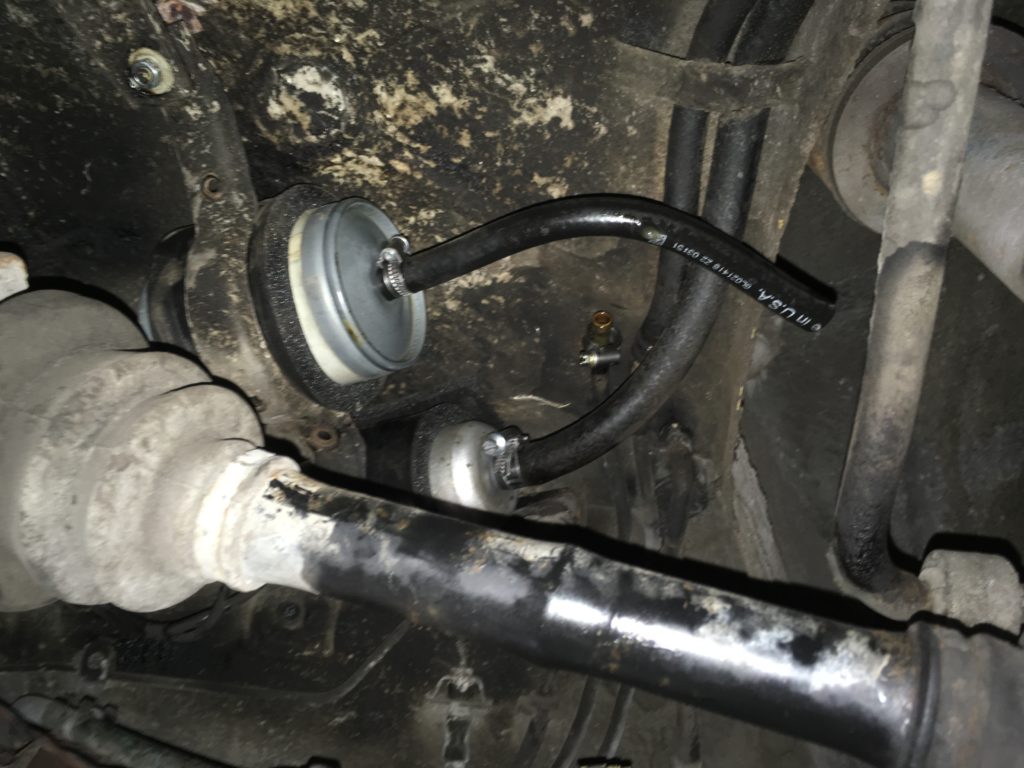
This disconnected fuel line Valdezed my garage.
I reconnected both the gas line and the heat shield, and the car fired right up. It seemed to idle and rev okay. The snotty rattle from the heat shield was gone, but the valves sounded a little loud.
Then I noticed that the exhaust hose exiting the rear window of my garage was fogging my backyard with clouds of oil smoke.
Okay, starts and runs but smokes like chimney. Great, just great.
Let’s look at the brakes. The car probably did need a master cylinder, but no harm in first trying to bleed the brakes and seeing if that restores the hard pedal, right? I hooked up my Motive power bleeder, went to the right rear caliper, and— nothing came out. Left rear, nothing. Only the right front caliper bled like I would’ve expected. Conclusion: The rubber brake lines were probably swelled and plugged. Not surprising for a 30-year-old car that has sat for the last five, but it made me stop and think.
I was very glad that I had shipped the Lama instead of thinking I could simply throw plugs and a master cylinder in it and drive it 1,500 miles. Yes, I missed having another adventure, but in terms of both time and expense, I clearly made the right choice.
Had I tried to road-trip the car instead, I certainly would’ve inspected the gas lines and many other things, but I wondered: How long had that gas line been off? It wasn’t the return line, it was the line connecting the output of the fuel pump and filter to the engine. The car can’t run without it. It’s tucked up high enough that I couldn’t imagine it being snagged when the car was unloaded from the transporter, and yet it must have, by a remarkable coincidence, popped off somewhere between there and my garage. There’s no way my friend Al could’ve driven the car around the block, and the car could’ve been loaded on and off the transport with no fuel supply. I guess I should count myself lucky.
I stood in my garage and stared at the car. My first reaction was to think that maybe I should dump it, float it on Facebook, put it on Craigslist, sell it as-is, make five hundred bucks and get out of it, but that thought passed. The idea that a car that sat for five years wouldn’t need all sorts of work, including braking components replaced, is fantasy. With the Lama on the lift, I sized it up. Body-wise, it was in remarkably good shape. Other than the rust on the right rear door, there was just one spot at the bottom of the right front fender where some rust was starting to form. The Bronzit paint was basically intact, although a bit more sun-damaged than I’d hoped.
I’ll work my way through the brakes, which I can do far more cost-efficiently from the comfort of my own lift-equipped garage than if I was working in Al’s driveway. Once the Lama is safe to drive, I’ll see if the oil smoke is due to stuck rings from its five-year snooze and subsides once some miles have been put on it, or whether it’s a burner. With these issues, I don’t know if I will make any money off it, or if the Lama will stiff me.
But to make the obvious follow-up Caddyshack joke, when I die, on my deathbed, I will receive total consciousness. So I got that goin’ for me.—Rob Siegel
Rob’s new book, Just Needs a Recharge: The Hack MechanicTM Guide to Vintage Air Conditioning, is available here on Amazon. His previous book Ran When Parked is available here. Or you can order personally inscribed copies of all of his books through Rob’s website: www.robsiegel.com.

